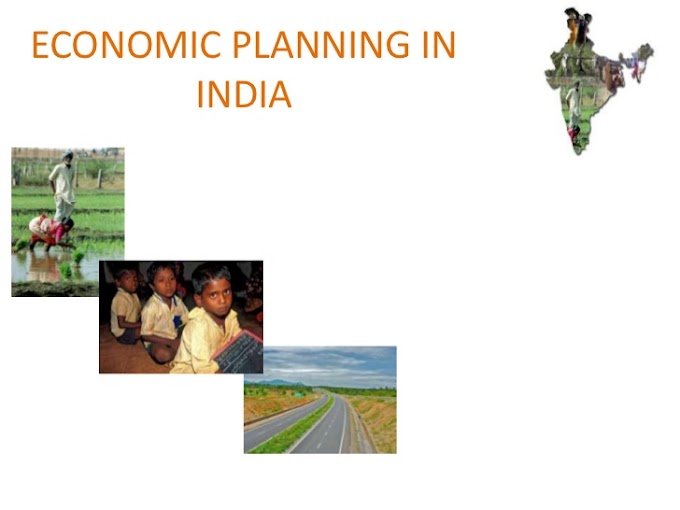Sources
Indian Prehistory
- The fossils of the early human being have not been found in India. A hint of the earliest human presence in India is indicated by stone tools of about 250,000 BC obtained from the deposits.
- However, recent reported artifacts from Bori in Maharashtra suggest the appearance of human beings in India around 1.4 million years ago.
- From their first appearance to around 3000 BC humans used only stone tools for different purposes.
- This period is, therefore, known as the Stone Age, which has been divided into Paleolithic (early or Old Stone) Age, Mesolithic (Middle Stone) Age, and Neolithic (New Stone) Age.
The Paleolithic Age in
(500,000 BC – 8000 BC)
- In India it developed in the Pleistocene period or the Ice Age.b.
- The earliest traces of human existence in India go back to 500,000 BC.
- The Paleolithic sites are spread in practically all parts of India except the alluvial plains of Indus and Ganga.
- The people of this age were food gathering people who lived on hunting and gathering wild fruits and vegetables.
- Man during this period used tools of unpolished, undressed rough stones and lived in cave and rock shelters. They had no knowledge of agriculture, fire or pottery of any material.
- They mainly used hand axes, cleavers, choppers, blades, scrapers and burin. Their tools were made of hard rock called ‘quartzite’. Hence Paleolithic men are also called ‘Quartzite Men’.
- Homo sapiens first appeared in the last of this phase.
- It has been pointed out that Paleolithic men belonged to the Negrito race.
- The Paleolithic Age in India has been divided into three phases according to the nature of stone tools used by the people and also according to the nature of change in the climate – Early or lower Paleolithic, Middle Paleolithic and Upper Paleolithic.
- The Early Paleolithic Age covers the greater part of the Ice Age. Its characteristic tools are hand axes, cleavers and choppers. Such tools have been found in Soan and Sohan river valley (now in Pakistan) and in the Belan Valley in the Mirzapur district of UP In this period climate became less humid.
- Middle Paleolithic Phase is characterized by the use of stone tools made of flakes mainly scrapers, borers and blade like tools. The sites are found in the valleys of Soan, Narmada and Tungabhadra rivers.
- In the Upper Paleolithic Phase, the climate became warm and less humid. This stage is marked by burins and scrapers. Such tools have been found in AP Karnataka, Maharashtra, Bhopal and Chhota Nagpur plateau.
The Mesolithic Era
(8000 BC – 6000 BC)
- In this age, climate became warm and dry. Climate changes brought about changes in fauna and flora and made it possible for human beings to move to new areas. Since then, there haven’t been major changes in the climate.
- The characteristic tools of the Mesolithic Age are known as Microliths-pointed, cresconic blades, scrapers, etc, all made of stone.
- The people lived on hunting, fishing and food gathering; at a later stage they also domesticated animals.
- The last phase of this age saw the beginning of plane cultivation.
- Various Mesolithic sites are found in the Chhotanagpur region, Central India and also south of the Krishna River.
- In the Belan valley of Vindhyas, all the three phases of the Paleolithic followed by the Mesolithic and then by the Neolithic have been found in sequence. Similar is the case with the middle part of the Narmada valley.
The Neolithic Era
(6000 BC – 1000 BC)
- In India Neolithic Age is not earlier than 6000 BC and at some places in South and Eastern India; it is as late as 1000 BC.
- During this phase people were again depending on stone implements. But now they used stones other than quartzite for making tools, which were more lethal, more finished and more polished.
- Neolithic men cultivated land and grew fruits and corn like ragi and horse gram. They domesticated cattle, sheep and goat.
- They knew about making fire and making pottery, first by hand and then by potters wheel. They also painted and decorated their pottery.
- They lived in caves and decorated their walls with hunting and dancing scenes. They also knew the art of making boats. They could also weave cotton and wool to make cloth.
- In the later phase of Neolithic phase people led a more settled life and lived in circular and rectangular houses made of mud and reed.
- Important sites of this age are Burzahom and Gufkral in J&K (famous for pit dwelling, stone tools and graveyard in house), Maski, Brahmagiri, Tekkalakota in Karnataka, Paiyampatti in Tamil Nadu, Piklihal and Hallur in AP, Garo hils in Meghalaya, Chirand and Senuwar in Bihar (known for remarkable bone tools), Amri, Kotdiji, etc.
- Koldihawa in UP revealed a three fold cultural sequence: Neolithic, Chalcolithic and Iron Age.
Chalcolithic Period
- The end of the Neolithic Period saw the use of metals of which copper was the first. A culture based on the use of stone and copper arrived. Such a culture is called Chalcolithic which means the stone-copper phase.
- Apart from stone tools, hand axes and other objects made of copperware also used.
- The Chalcolithic people used different types of pottery of which black and red pottery was most popular. It was wheel made and painted with white line design.
- These people were not acquainted with burnt bricks. They generally lived in thatched houses. It was a village economy.
- They venerated the mother goddess and worshiped the bull.
- Important sites of this phase are spread in Rajasthan, Maharashtra, West Bengal, Bihar, MP, etc.
Indus Valley Civilization
Ancient Civilizations in India
- The Indus Valley Civilization was an ancient civilization thriving along the Indus River and the Ghaggar-Hakra River in what is now Pakistan and north-western India. Among other names for this civilization is the Harappan Civilization, in reference to its first excavated city of Harappa.
- An alternative term for the culture is Saraswati-Sindhu Civilization, based on the fact that most of the Indus Valley sites have been found at the Halkra-Ghaggar River.
- R.B. Dayaram Sahni first discovered Harappa (on Ravi) in 1921. R.D. Banerjee discovered Mohenjodaro or ‘Mound of the Dead’ (on Indus) in 1922. Sir John Marshal played a crucial role in both these.
- Harappan Civilization forms part of the proto history of India and belongs to the Bronze Age.
- Mediterranean, Proto-Australoid, Mongoloids and Alpines formed the bulk of the population, though the first two were more numerous.
- More than 100 sites belonging to this civilization have been excavated.
- According to radio-carbon dating, it spread from the year 2500 – 1750 BC.
- Copper, bronze, silver, gold were known but not iron.
Geographical Extent
- Covered parts of Punjab, Sindh, Baluchistan, Gujarat, Rajasthan and some parts of Western UP. It extended from Manda in Jammu in the north to Daimabad in the south and from Alamgirpur in W. UP to Sutkagendor in Baluchistan in the west.
- Major sites in Pakistan are Harappa (on Ravi in W Punjab), Mohenjodaro (on Indus), Chanhu-Daro (Sindh), etc. In India, major sites are Lothal, Rangpur and Surkotda (Gujarat), Kalibangan (Rajasthan), Banwali (Hissar), and Alamgirpur (Western UP).
- Largest and the latest site in India is Dholavira in Gujarat. Dr. J.R Joshi and Dr. R.S. Bisht were involved in it.
Indus Valley Civilization Town Planning
- Elaborate town-planning. It followed the Grid System. Roads were well cut, dividing the town into large rectangular or square blocks. Lamp posts at intervals indicate the existence of street lightning. Flanking the streets, lanes and by-lanes were well-planned houses.
- Used burnt bricks of good quality as the building material. Elsewhere in the contemporary world, mud-bricks were used.
- Houses, often of two or more storey, varied in size, but were quite monotonous a square courtyard, around which were a number of rooms. No window faced the streets. The houses had tiled bathrooms.
- Good drainage system. Drains were made of mortar, lime and gypsum and covered with large brick slabs for easy cleaning. Shows developed sense of health and sanitation.
- The towns were divided into 2 parts: Upper part or Citadel and Lower Part. The Citadel was an oblong artificial platform some 30-50 feet high and about 400-200 yards in area It was enclosed by a thick (13 m at Harappa) crenelated mud-brick wall. In Citadel public buildings, granaries, important workshops and religious buildings were there. In lower part people used to live.
- In Mohanjodaro, a big public bath (Great Bath) measuring 12 m by 7 m and 2.4 m deep, has been found. Steps led from either end to the surface, with changing rooms alongside. It was probably used for ritual bathing.
Excavations & Excavators
|
River |
Year |
Excavators |
|
|
Chanhudaro |
(on Indus) |
1931 |
M.G Majumdar |
|
Sutkogendor |
(on Dasak) |
1927 |
Sir Aurel Stein |
|
Kotdip |
(on Indus) |
1955 |
Fazl Ahmed Khan |
|
Ropar |
(on Satluj) |
1953 |
Y.D. Sharma |
|
Banwaii |
(on Saraswati) |
1973 |
R.S.Bisht |
|
Lothal |
(on Bhogwa) |
1954 |
S.R.Rao |
|
Rangpur |
(on Mahar) |
1931-53 |
M.S.Vats, B.B. Lal, S.R. Rao |
|
Amri |
(on Indus) |
1929 |
N.G. Majumdar |
|
Kalibangan |
(on Ghaggar) |
1961 |
B.B.Lai |
|
Sorkotda |
- |
1964 |
J. Joshi |
|
Alamgirpur |
(on Hindon) |
1958 |
Y.D. Sharma |
Agriculture
- The Indus people sowed seeds in the flood plains in November, when the flood water receded, and reaped their harvests of wheat and barley in Apr, before the advent of the next flood.
- Grew wheat, barley, rai, peas, sesamum, mustard, rice (in Lothal), cotton, dates, melon, etc. The Indus people were the first to produce cotton.
- In Kalibangan, fields were ploughed with wooden ploughs.
- Domesticated animals on large scale. Besides the cattle, cats and dogs were domesticated. Horse wasn’t in regular use but elephant was. Remains of horse at Surkotda and dogs with men in grave at Ropar have been discovered.
- Produced sufficient to feed themselves.
- Food grains were stored in granaries.
Trade and Commerce
- Well-knit external and internal trade. There was no metallic money in circulation and trade was carried through Barter System.
- Weights and measures of accuracy existed in Harappan culture (found at Lothal). The weights were made of limestone, steatite, etc and were generally cubical in shape.
- 16 was the unit of measurement (16, 64,160, 320).
- Flint tool-work, shell-work, bangle making, pottery making, etc were practiced. Raw material for these came from different sources: gold from N.Karnataka, silver and lapis lazuli from Afghanistan and Iran, copper from Khetri and Baluchistan, etc.
- Bead making factory existed in Chanhudaro and Lothal. They were items of export.
- A dockyard has been discovered at Lothal. Rangpur, Somnath and Balakot functioned as seaports. Sutkagendor and Sutkakoh functioned as outlets.
- The inland transport was done with bullock carts.
- Every merchant or mercantile family probably had a seal bearing an emblem, often of a religious character, and a name or brief description, on one side. The standard Harappa seal was a square or oblong plaque made of steatite stone. The primary purpose of the seal was probably to mark the ownership of property, but they may have also served as amulets.
- The Mesopotamian records from about 2350 BC onwards refer to trade relations with Meluha, the ancient name of the Indus region. Harappan seals and other material has been found at Mesopotamia. Also traded with Sumer.
Art and Craft
- The Harappan culture belongs to the Bronze Age.
- Bronze was made by mixing tin and copper. Tools were mostly made of copper and bronze. For making bronze, copper was obtained from Khetri in Rajasthan and from Baluchistan, and tin from Afghanistan.
- Cotton fabrics quite common. Woolen in winter.
- Very fond of ornaments (of gold, silver, ivory, copper, bronze, precious stones) and dressing up. Ornaments were worn by both men and women. Women wore heavy bangles in profusion, large necklaces, ear-rings, bracelets, fingure-rings, girdles, nose studs and anklets. The Harappans were also an expert bead makers.
- Potter’s wheel was in use. Their pottery was red or black pottery. Played dice games. Their favourite pastime was Gambling.
- The Harappans most notable artistic achievement was their seal gravings, esp. those of animals. The red sandstone torso of a man is particularly impressive for its realism. However, the most impressive of the figurines is perhaps the bronze image of the famous dancing girl (identified as devadasi), found at Mohenjodaro.
- For their children, they made cattle-toys with movable heads, model monkeys which could slide down a string, little toy-carts, and whistles shaped like birds, all of terracotta.
Religious Life
- Main object of worship was the Mother Goddess. But the upper classes preferred a god, nude with two horns, much similar to Pasupati Siva. Represented on the seal is a figure with three horned heads in a yogic posture. He is surrounded by an elephant, a tiger and a rhinoceros, and below his throne is a buffalo. Near his feet are two deer. Pashupatinath represented male deity.
- Phallus (lingam) and yoni worship was also prevalent.
- Many trees (pipal), animals (bull), birds (dove, pigeon) and stones were worshipped. Unicorn was also worshipped. However, no temple has been found, though idolatry was practiced.
- At Kalibangan and Lothal fire altars have been found.
- Although no definite proof is available with regard to the disposal of the dead, a broad view is that probably there were three methods of disposing the dead – complete burial, burial after exposure of the body to birds and beasts, and cremation followed by burial of the ashes.
- The discovery of cinerary urns and jars, goblets or vessels with ashes, bones and charcoal may, however, suggest that during the flourishing period of the Indus Valley culture the third method was generally practiced. In Harappa, there is one place where evidence of coffin burial is there. The people probably believed in ghosts and evil spirits, as amulets were worn.
- Dead bodies were placed in the north-south orientation.
Script
- The script is not alphabetical but pictographic (about 600 undeciphered pictographs).
- The script has not been deciphered so far, but overlaps of letters show that it was written from right to left in the first line and left to right in the second line. This style is called ‘Boustrophedon’.
Political Organization
- There is no clear idea of the political organization of the Indus Valley people. Perhaps they were more concerned with commerce and they were possibly ruled by a class of merchants.
- Also, there was an organization like a municipal corporation to look after the civic amenities of the people.





